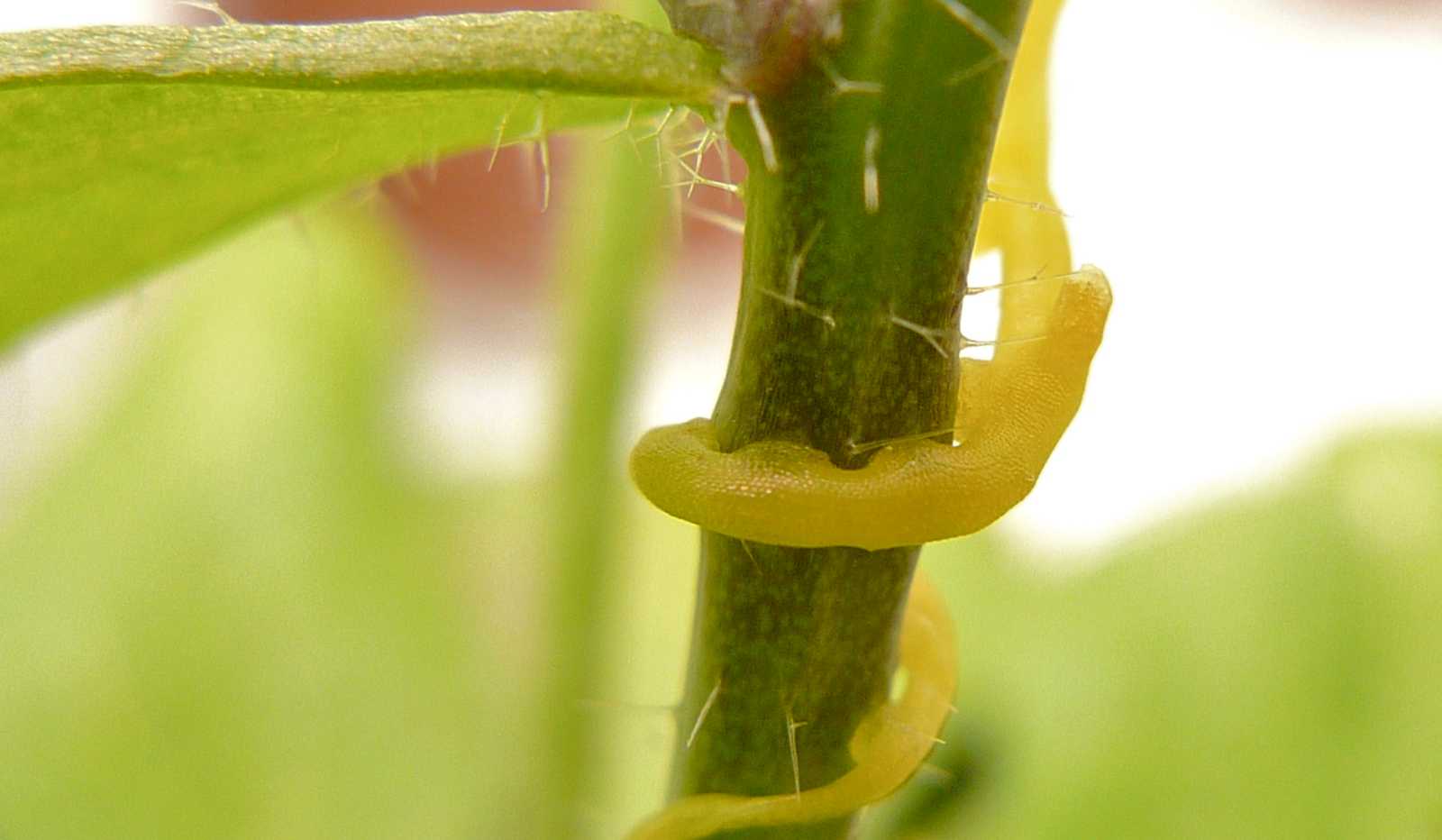Plant responses to olfactory cues

While their sensory abilities and behaviors are less conspicuous than those of animals, plants nevertheless actively perceive and respond to diverse features of their environments. This is perhaps most apparent in the physiological and growth responses of plants to light cues. However, it is increasingly clear that plants can also perceive and respond to environmental odors and that these responses can mediate important ecological interactions. Our laboratory has played an active role in documenting plant olfactory responses in a number of ecological contexts, including (i) defense priming by damage-induced volatiles, (ii) plant responses to insect pheromones, and (iii) host location by parasitic plants. Through ongoing research on in each of these areas, we are exploring the mechanisms of odor perception in plants, the evolution and fitness consequences of plant olfactory responses, and the implications of such responses for ecological interactions among plants and other organisms.
Selected publications:
Helms, AM, CM De Moraes, A Tröger, HT Alborn, W Francke, JF Tooker & MC Mescher. (2017) Identification of an insect-produced olfactory cue that primes plant defenses.
Nature Communications 8: 337 external page DOI
Yip EC, CM De Moraes, MC Mescher & JF Tooker. (2017) The volatile emission of a specialist herbivore alters patterns of plant defence, growth and flower production in a field population of goldenrod.
Functional Ecology 31: 1062-1070 external page DOI
De Moraes CM & MC Mescher. (2016) CM. Biotic interactions: Communicative interactions of plants: plant biology in the age of information.
Current Opinion in Plant Biology 32: IV-VI.
Mescher, M.C., De Moraes, C.M. (2014) The role of plant sensory perception in plant-animal interactions.
Journal of Experimental Botany. doi: 10.1093/jxb/eru414
Rodriguez-Saona, C.R., Mescher, M.C., De Moraes, C.M. (2013) The role of volatiles in plant-plant interactions.
Signaling and Communication in Plants 19: 393-412.
Smith, J.D., Mescher, M.C., De Moraes, C.M. (2013) Implications of bioactive solute transfer from hosts to parasitic plants.
Current Opinion in Plant Biology 16(4): 464-472.
Runyon, J.B., Mescher, M.C., Felton, G.W., De Moraes, C.M. (2010) Parasitism by Cuscuta pentagona sequentially induces JA and SA defence pathways in tomato.
Plant, Cell & Environment 33(2): 290-303.
Frost, C.J., Mescher, M.C., Dervinis, C., Davis, J.M., Carlson, J.E., De Moraes, C.M. (2008) Priming defense genes and metabolites in hybrid poplar by the green leaf volatile cis-3-hexenyl acetate.
New Phytologist 180(3): 722-734.
Runyon, J.B., Mescher, M.C., De Moraes, C.M. (2008) Parasitism by Cuscuta pentagona attenuates host plant defenses against insect herbivores.
Plant Physiology 146(3): 987-995.
Frost, C.J., Appel, H.M., Carlson, J.E., De Moraes, C.M., Mescher, M.C., Schultz, J.C. (2007) Within-plant signaling via volatiles overcomes vascular constraints on systemic signaling and primes responses against herbivores.
Ecology Letters 10(6): 490-498.
Runyon, J.B., Mescher, M.C., De Moraes, C.M. (2006) Volatile cues guide host location and host selection by parasitic plants.
Science 313(5795): 1964-1967.